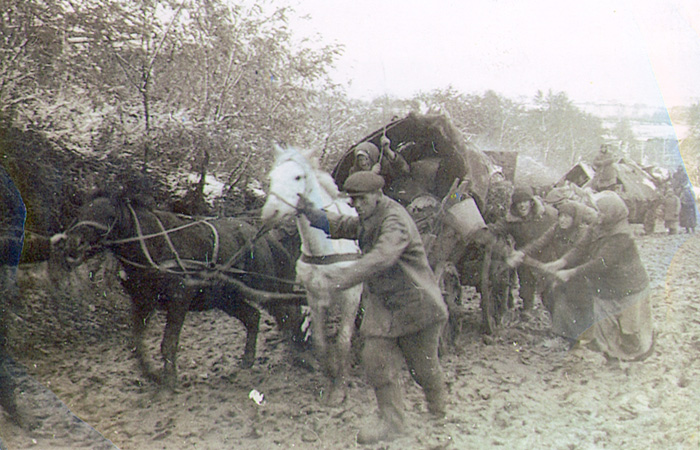Village News
Mennonites at War: Migrants

Mennonite Heritage Village’s (MHV) upcoming exhibit “Mennonites at War” explores various responses Mennonites have had toward war and violence over their five-hundred-year history. Part of the exhibit focuses on the narrative thread of migration as a response to war, violence, and the threat of military participation that is woven throughout this history.
Mennonites in Manitoba are very familiar with the first three major waves of Russian-descendant Mennonites to Canada. First, the Mennonites who arrived in Manitoba in the 1870s, who chose to emigrate over the issue of the Russian government pulling back privileges, including complete military exemption, granted to Mennonites upon their settlement in Russia in 1789. Much of Mennonite Heritage Village’s (MHV) outdoor village is comprised of the history and architecture stemming from this migration as is our signature event “Pioneer Days”.
The next major wave of Mennonite migration to Canada came in the 1920s. This wave, known as the “Russländer” (“Russians,” in comparison to the 1870s Mennonites, who became known as the “Kanadier,” or “Canadians”), lived through the First World War, the Russian Revolution, and the first years of life under communism in the Soviet Union.
From 1914, the start of the First World War, Mennonite life in Russia began to fall apart. Because of their status as foreign colonists, their German ethnicity and alliance with Germany during the German occupation of Ukraine during the First World War, and their higher economic class, Mennonites, along with other foreign colonists, were treated with suspicion and experienced tremendous violence at the hands of the Red Army and Nestor Makhno’s anarchists. Beginning in 1923, with the assistance of the Canadian Mennonite Board of Colonization and the generosity of the Canadian Pacific Railway, over 24,000 Mennonites immigrated to Canada. This migration ended in 1930 as the Soviet gates slammed shut and Canada’s acceptance of new immigrants ceased in the face of the economic depression we now call the “Dirty Thirties.”
For those Mennonites who did not or could not leave the Soviet Union in the 1920s, life became even more difficult. Mennonites remaining in Ukraine faced the severe famine of 1932- 1933, which in Canada today we know as the genocide called the Holodomor, Ukrainian for “death by hunger.” In the late 1930s, Mennonites experienced Soviet repression, as many Mennonite men were rounded up by the police on trumped-up charges and were either killed outright or sent to almost certain death in the gulags.
On the heels of these events came the start of the Second World War in 1939 and Mennonites were again regarded with even more suspicion because of their ethnicity and allegiance to and cooperation with Germany when Germany again invaded Ukraine in 1941. When the German occupation forces were forced out of Ukraine in 1943 and evacuated 350,000 ethnic Germans, 35,000 Mennonites joined this “Great Trek.” Many of these refugees, once they arrived in German-held territories, became naturalized German citizens and many young Mennonite men were drafted into the German military.
At war’s end, these Mennonite refugees joined the flood of displaced people needing assistance in post-war Germany. Through the assistance of Mennonite Central Committee (MCC), about 12,000 Mennonites found safety and new homes in South America and Canada. Historians in recent years have begun to scrutinize the actions and process undertaken by Mennonite Central Committee (MCC) to assist Mennonites, especially those with ties to the German military.
This broad overview of Mennonite migrations to Canada reads like a never-ending litany of life becoming increasingly dire for this ethno-religious group in the Soviet Union. Often, our history of Mennonite migration ends at this point. We forget that many more remained behind in the Soviet Union and that war, violence, and persecution continued to shape not just the next years, but the next decades, of their lives and their descendants. We miss that a fourth wave of migration of Mennonite-descendants has been taking place since the 1990s.
Stay tuned for more about this ongoing migration of “Aussiedler” (emigrants) to Manitoba in a future Village News post.




